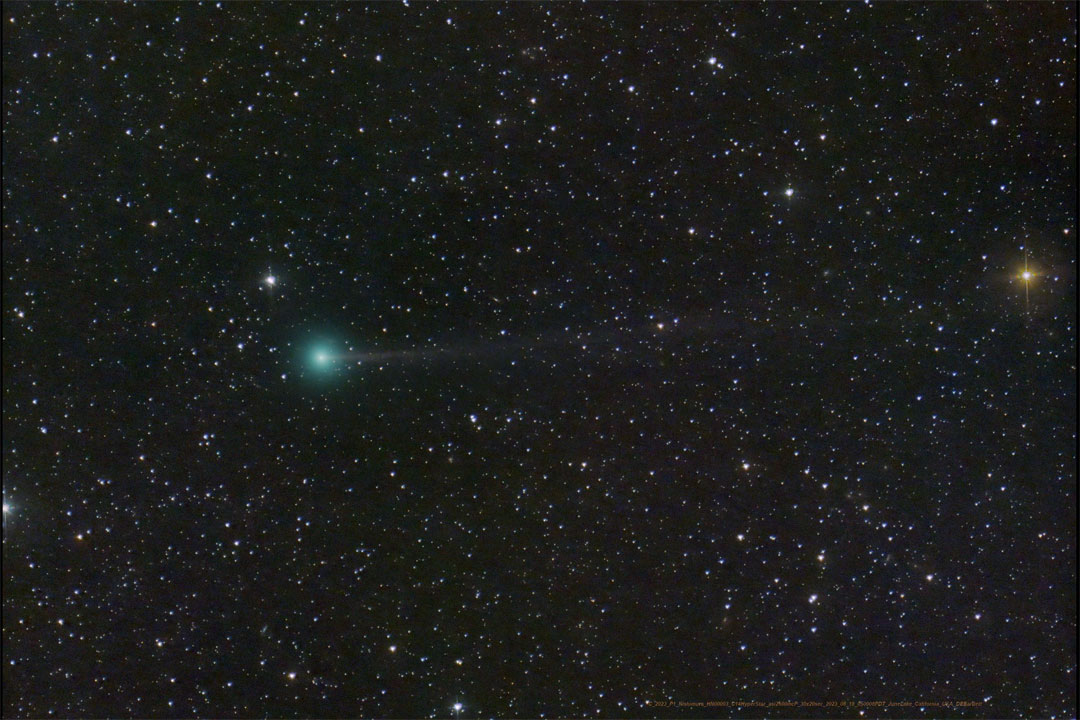2023年8月21日
Introducing Comet Nishimura
Credit & Copyright: Dan Bartlett
Explanation: Will Comet Nishimura become visible to the unaided eye? Given the unpredictability of comets, no one can say for sure, but it currently seems like a good bet. The comet was discovered only ten days ago by Hideo Nishimura during 30-second exposures with a standard digital camera. Since then, C/2023 P1 Nishimura has increased in brightness and its path across the inner Solar System determined. As the comet dives toward the Sun, it will surely continue to intensify and possibly become a naked-eye object in early September. A problem is that the comet will also be angularly near the Sun, so it will only be possible to see it near sunset or sunrise. The comet will get so close to the Sun — inside the orbit of planet Mercury — that its nucleus may break up. Pictured, Comet Nishimura was imaged three days ago from June Lake, California, USA while sporting a green coma and a thin tail.
Tomorrow’s picture: nebula unknown
西村彗星
影像提供与版权: Dan Bartlett
说明: 西村彗星会亮到肉眼可见吗?鉴于彗星的不可预测性,没人能说个准,但目前这种可能性颇高。这颗彗星是西村荣男刚在十天前,用标准数码相机进行30秒长曝光时所发现的。从那时起,西村彗星(C/2023 P1 Nishimura)的亮度持续增加,而穿过太阳系内围的路径也获得确定。随着这颗彗星向太阳俯冲,它肯定会继续增亮,并可能在9月初成为一个肉眼可见的天体。问题是:届时这颗彗星的视角也会和太阳很接近,所以只能在日落或日出前后见到它。这颗彗星将会进到水星轨道之内,离太阳非常近,以至于它的彗核或许会崩解。上图所呈现的是3天前摄于美国加州六月湖的西村彗星,当时它曳着泛绿的彗发和和纤细的彗尾。 (Comet Nishimura 西村彗星)
明日的图片: nebula unknown



